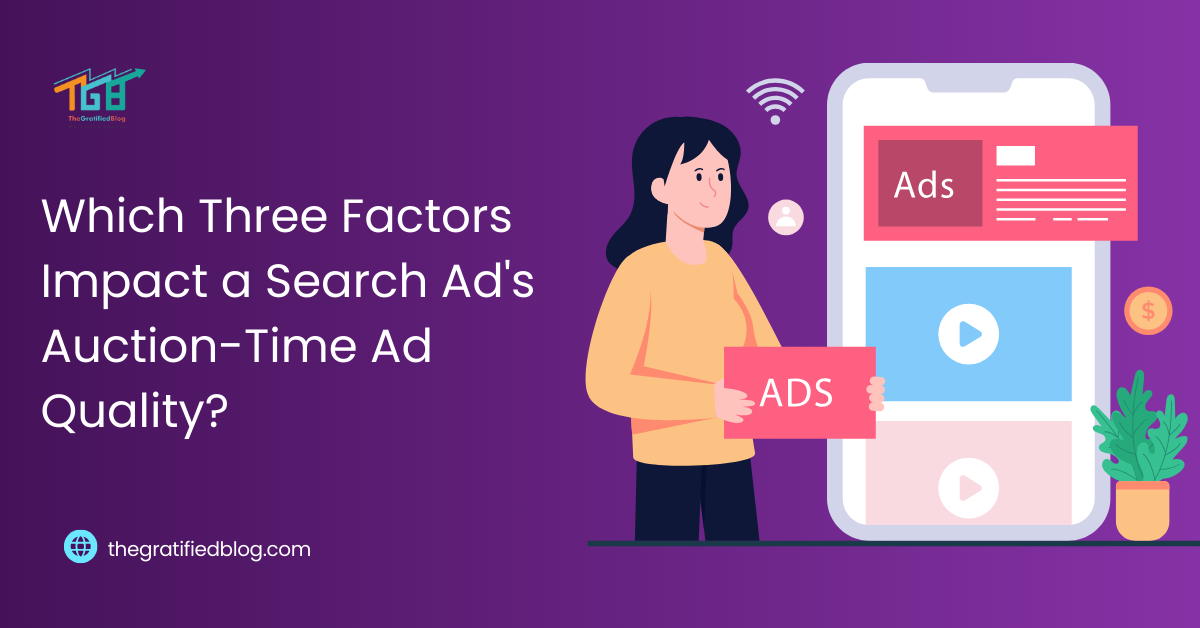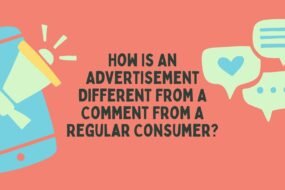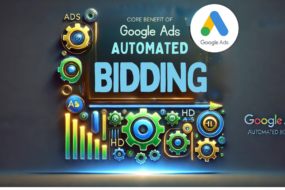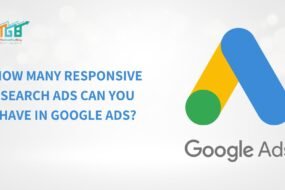
When you search for something online, have you ever noticed how some ads pop up at the top of the search results? It’s not random. These ads appear there for a reason, and it all boils down to something called auction-time ad quality. If you’re curious about what makes one ad rank higher than another, let’s break it down in a way that’s easy to understand.
Three main factors influence a search ad’s auction-time ad quality. These factors work together to determine where an ad will appear on the page—or if it will appear at all. This blog, “Which Three Factors Impact a Search Ad’s Auction-Time Ad Quality?” dives into each of these factors in a simple, conversational way so you’ll know exactly what they mean.
What is Auction-Time Ad Quality?
Auction-time ad quality refers to the process search engines use to decide how and where ads are displayed on a search results page. Every time someone searches for something, an auction takes place. The search engine evaluates all the ads and chooses which ones to show, their position, and their cost-per-click (CPC).
This decision depends on several factors, but the quality of your ad plays a significant role. A high-quality ad can outrank others, even if it bids less. So, improving your ad quality is key to running successful campaigns.
Which Three Factors Impact a Search Ad’s Auction-Time Ad Quality?
Three key factors impact a search ad’s auction-time ad quality:
1. Expected Click-Through Rate (CTR)
Think of this as how likely someone is to click on your ad. When search engines decide which ad to show, they look at how clickable it seems. But how do they know? Here’s what they look at:
What Affects Expected CTR?
- Past performance: If people have clicked on your ad often in the past, search engines assume it will do well again.
- Your ad copy: Does your ad grab attention? Does it promise something useful or valuable? A boring or unclear ad might get ignored, which hurts your CTR.
- Your position on the page: Ads at the top usually get more clicks. But this doesn’t mean being on top guarantees success. Your ad still has to be good.
How to Improve CTR
- Use clear and action-focused language. For example, instead of saying “We sell shoes,” say “Shop the most comfortable shoes today.”
- Add specific details. Numbers work great, like “50% off” or “Free shipping.”
- Match your ad to the user’s intent. If someone searches for “best coffee makers,” your ad should talk about coffee makers, not just coffee in general.
2. Ad Relevance
Relevance is all about how well your ad matches what the person is searching for. If someone searches for “affordable laptops,” and your ad talks about laptops, that’s good. If your ad talks about phones instead, that’s not so great.
Why Ad Relevance Matters
Search engines want to make sure users find what they are looking for. If your ad seems irrelevant, it might not show up, even if you’re willing to pay more.
How to Make Your Ads More Relevant
- Match keywords: Use the exact words people are searching for in your ad copy.
- Be specific: Instead of saying “Get great deals,” say “Save 20% on affordable laptops.”
- Group similar ads: If you’re selling different products, make separate ads for each. For instance, one ad for laptops and another for tablets.
Quick Tip
If your ad has nothing to do with the search query, it won’t get clicks. Worse, search engines might stop showing it altogether. Always keep the ad tightly connected to the search intent.
3. Landing Page Experience
Imagine clicking on an ad, expecting to find something useful, and ending up on a messy, confusing webpage. You’d leave, right? That’s why landing page experience is crucial. It’s the first impression users get after clicking your ad.
What Makes a Good Landing Page?
- Relevance: Does the page match the promise of your ad? If your ad says “Free shipping on books,” the landing page should talk about free shipping on books, not movies.
- Ease of use: Is your page easy to navigate? Users shouldn’t have to click around too much to find what they need.
- Speed: If your page takes forever to load, people might leave before it even finishes.
- Trustworthiness: Include clear contact information, customer reviews, and secure payment options to build trust.
How to Improve Landing Page Experience
- Keep it simple. Avoid clutter and focus on one clear call-to-action, like “Sign up now” or “Shop today.”
- Make sure the page loads quickly. Compress images and avoid unnecessary scripts.
- Optimize for mobile. Many users browse on their phones, so your page should look great on any device.
How Do These Factors Work Together?
These three factors—expected CTR, ad relevance, and landing page experience—work in harmony to determine your ad quality score. This score plays a pivotal role in influencing critical elements of your ad performance, including:
- Ad Rank: A higher quality score often leads to better ad placements, even if your bids are comparatively lower than competitors.
- Cost-Per-Click (CPC): By improving your quality score, you can significantly reduce the cost you pay per click, making your ad campaigns more cost-efficient.
- Visibility: Ads with higher scores are more likely to appear prominently in search results, increasing their chances of catching the audience’s attention and driving traffic.
How Does Auction-Time Ad Quality Work?
Let’s simplify the process:
- User searches for something: For example, they might search for “best smartphones under 500 dollars.” This triggers the process.
- Ads enter the auction: Advertisers who bid on related keywords, such as “smartphones under 500 dollars,” become eligible to participate in the auction.
- Search engine evaluates ad quality: Factors like click-through rate (CTR), relevance to the search query, and the landing page experience are analyzed to assess the quality of each ad.
- Ad rank is determined: Ads with higher quality scores often secure better placements, even if their bids are lower than others with less compelling ads.”
What Are Practical Tips to Improve Your Ad Quality?
Here are some actionable steps to get the most out of your search ads:
1. Write Better Ads
- Include the search keyword naturally in your headline and description.
- Use power words like “exclusive,” “limited-time,” or “guaranteed.”
- Add extensions like phone numbers, location, or links to specific pages.
2. Optimize Your Landing Pages
- Test different designs to see what works best.
- Make sure your page answers the user’s question immediately.
- Use visuals, like images or videos, to make the page more engaging.
3. Monitor and Adjust
- Check your ad performance regularly. Are people clicking? Are they converting?
- Experiment with different headlines or descriptions to see what gets more clicks.
- If one ad isn’t working, don’t be afraid to try something new.
What Are the Common Mistakes to Avoid?
When trying to improve your ad quality, watch out for these pitfalls:
- Overstuffing keywords: Adding too many keywords can make your ad look spammy and less engaging.
- Ignoring mobile users: If your landing page doesn’t work well on mobile, you’ll lose a lot of potential clicks.
- Broad targeting: Trying to appeal to everyone usually results in ads that resonate with no one.
Frequently Asked Questions
Q1. Which three factors impact a search ad’s auction-time ad quality?
Ans. Search ad auction-time quality depends on:
- Expected Click-Through Rate (CTR): Likelihood of user engagement.
- Ad Relevance: How closely the ad matches the search query.
- Landing Page Experience: Ease of navigation and relevance of the landing page content.
Q2. What are the three main factors of the Search auction for paid Search?
Ans. Key factors in paid search auctions include:
- Bid Amount: Determines your maximum CPC.
- Ad Quality Score: Based on CTR, relevance, and landing page experience.
- Ad Extensions: Use of extra information like links and callouts boosts visibility.
Q3. What are the three most important components of a good search ad?
Ans. A good search ad emphasizes:
- Compelling Headlines: Draws user attention.
- Relevant Keywords: Matches user intent.
- Clear Call-to-Action (CTA): Guides users to the next step.
Q4. What are the three layers of a Google Ads account?
Ans. The three layers of a Google Ads account are:
- Account Level: Includes login details and billing information.
- Campaign Level: Focuses on budgeting, targeting, and overall goals.
- Ad Group Level: Contains specific ads and keywords for targeting.
Q5. What are the 3 objectives for an ad?
Ans. Common ad objectives are:
- Awareness: Building brand recognition.
- Consideration: Driving traffic or engagement.
- Conversion: Encouraging purchases or lead generation.
Wrapping It All Up
So, there you have it. The three factors that impact a search ad’s auction-time quality are expected CTR, ad relevance, and landing page experience. Each plays a vital role in determining where your ad shows up and how much you pay for it.
When you focus on these factors, your ads not only perform better but also save you money in the long run. Start by writing ads that people want to click, keep them relevant to what users are searching for, and make sure your landing pages provide a great experience.
It’s not rocket science, but it does take some effort and creativity. With the tips shared here, you’re now ready to create better search ads that can stand out in the auction and get real results.








No Comments